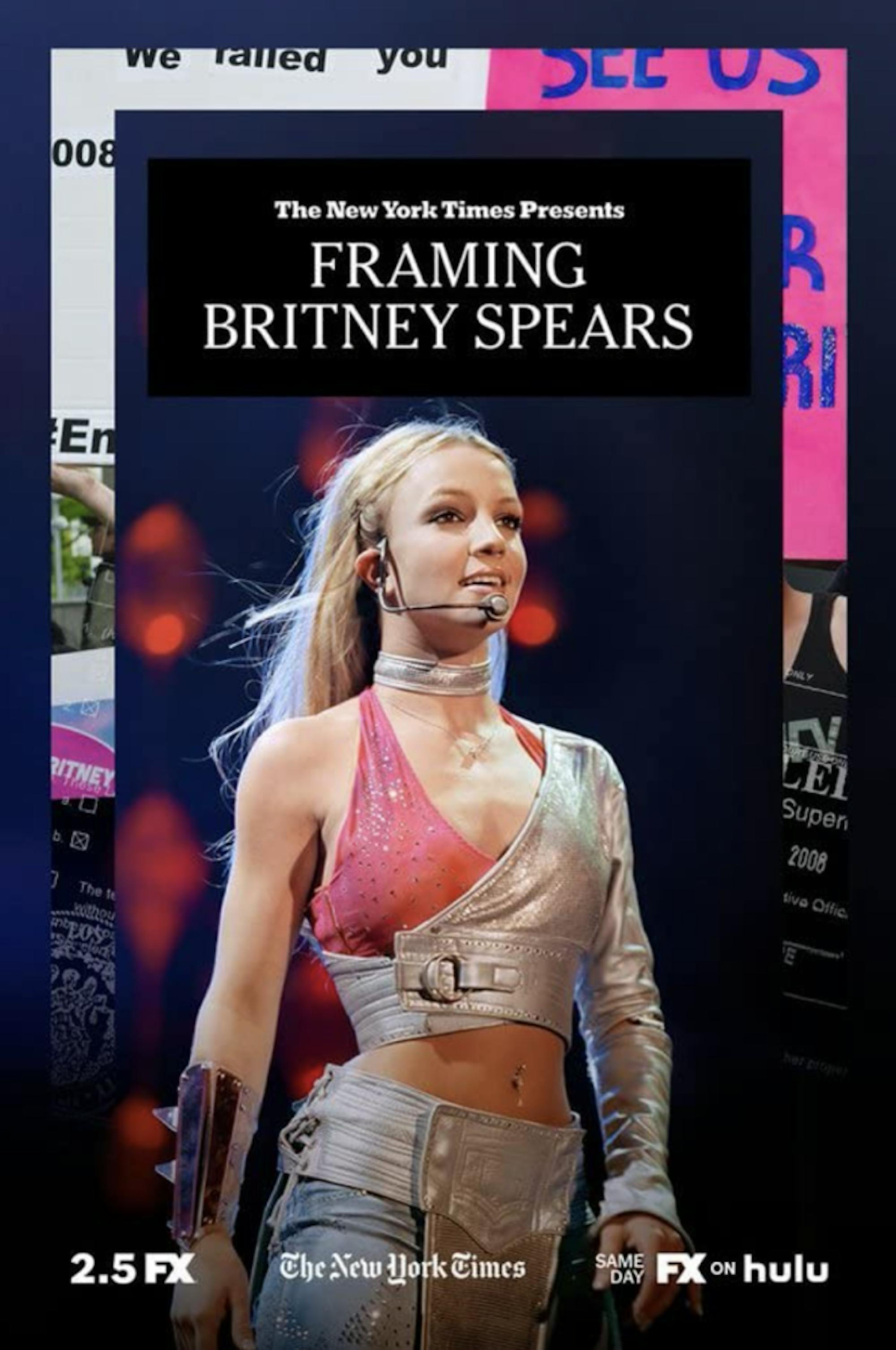Few popstars can match the fame and success of Britney Spears. Her meteoric rise to fame in the late ’90s, followed by ongoing triumphs in the 2000s and beyond, serve as career benchmarks for music artists. All of her albums were smash hits, featuring vibrant singles and iconic music videos. Spears played with many trends in her music, from teen pop and dance-pop to electronic dance music. She calculated every single career move, at least beforeher conservatorship began in 2008, and made it look easy.
That latter point isn’t something“Framing Britney Spears" (2021) spends a lot of time on, but rather uses it to show Spears’ independence and ingenuity before her conservatorship changed her life. Releasedin Februaryas a feature of "The New York Times Presents" (2020–) docuseries, “Framing Britney Spears” focuses on the singer’s struggles with the various institutions that sparked her infamous mid-2000s breakdowns.
It seems like an understatement to call the media and music industry’s misogyny, harassment and deliberate destruction of Spears as “struggles.” But “Framing Britney Spears” comes at a moment when American culture is finally deconstructing this euphemism. We’re now grappling with just how terribly Spears was treated, from becoming a meme-ified punchline to being the focus of caricatures across the media— even on children’s shows, such as “The Fairly OddParents" (2001–17).
The documentary’s release also comes out of the #FreeBritney movement, which calls for the termination of Spears’ conservatorship under her father, Jamie Spears. The campaign is fan-driven, its hashtag exploding across social media channels. But celebrities, too, have weighed in on #FreeBritney;everyone from Cher to Miley Cyrus and Paris Hilton has supported ending Spears’ conservatorship and giving her justice.
But “Framing Britney Spears” can’t capture it all. The rise, fall and redemption of Spears is simply too large to cover in a 74-minute documentary. At this point, it’s practically an American myth, a story so big and widespread that everyone has their own version of it. Instead, director Samantha Stark wastes little time establishing the story she wants to tell, tracing Spears’ professional and personal issues while outlining her circle of support (which her father Jamie is completely absent from).
After beginning with a quick look at the #FreeBritney movement, “Framing Britney Spears” takes viewers to Spears’ hometown ofKentwood, LA. It’s small and intimate. We learn about the singer fromher friend and former assistant Felicia Culotta. There are old photographs, funny anecdotes and reminders of youth — with a particular emphasis on just how young Spears was when shebegan her career with “The Mickey Mouse Club” (1989–96) and a recording deal with Jive Records.
Here, “Framing Britney Spears” quickly dissects Spears’ early work. Former Jive Records marketing executive Kim Kaiman meticulously details the effort that went into performances and public appearances. Kaiman recalls that Spears' father really only had one thought as his daughter entered the music business: money. While Spears' mother Lynne was supportive and helpful, Jamie's only thought was, as Kaimanrecalls, "My daughter's gonna be so rich, she's gonna buy me a boat."
The most notable and shocking thing about all of this isn't parental support (or lack thereof) but rather just how fast Spears became famous. It was almost overnight. In one clip, she’s singing in a sparsely crowded mall; in the next, we hear the cheers and screams of thousands.
Like us, “Framing Britney Spears” understands just how monumental Spears was at the time of her first albums “...Baby One More Time” (1999) and “Oops!... I Did It Again” (2000). The documentary singles her out as a girl in the boys’ club, surrounded by — and eventually overshadowing — boybands. And part of that was Spears’ sex appeal. It’s a topic that “Framing Britney Spears” constantly juggles with. Spears, very in control of her image, was constantly questioned and ridiculed by the media for owning her sexuality.
At the time, interviewers likeDiane Sawyer tore Spears apart over her relationship with Justin Timberlake. Panels asked about her virginity. Public figures like Kendel Ehrlichthreatened to shoot her. Magazines increasingly invaded Spears' personal life, magnifying her every move. “Framing Britney Spears” doesn’t shy away from all of these horrors; rather, it examines them with journalistic precision.
The movie also delves into paparazzi’s stalking and harassment of Spears, who came into the spotlight just as paparazzi were really honing their powers. At every turn, Spears was followed by a hoard of cameras, with men faking kindness and expressing concern over her outbursts. But “Framing Britney Spears” knows better. Even when the documentary interviews paparazzo Daniel “Dano” Ramos, it’s clear:The paparazzi made piles of money traumatizing Spears, and the more shots they got of her breakdown, the more they profited.
Likewise, Stark reckons with Timberlake’s role and explores how the boyband-turned-solo singerweaponized his breakup with Spears to further his career and make himself the “good guy.” It’s a useful observation that certainly struck a nerve, as Timberlakeissued a public apology just a week after the documentary’s release.
Chronologically, this all leads to Spears’ conservatorship. Court documents, visits to rehabilitation and treatment centers and child custody battles connect to Spears’ father’s control of her personal life and financial matters. “Framing Britney Spears” compares both of those latter aspects. And that’s a particularly useful moment for viewers who might not know much about conservatorships. It shines a light not only on Spears’ situation, but so many other Americans under this system.
In all of these instances, “Framing Britney Spears” finds the sweet spot between evaluating what happened at the time and how we’re looking back and discussing it now. It smartly weaves together narratives that explore what led to Spears’ conservatorship while acknowledging our current reckoning and collective appreciation for Spears’ redemption, too.
If the singer’s breakdown was profitable for media outlets, then her comeback album “Circus” (2008) and its subsequent works were even more of a field day. The singer has always been a money machine — perhaps that’s why the current conservatorship battles are so heated. “Framing Britney Spears” traces the paper trail: Jamie, along with others involved in the conservatorship,makes a lot of money on Spears' career.
Over the past few years, Spears has made moves to remove the conservatorship. Recently, Jamie lost the bid to continue being Spears’ sole conservator and Republican lawmakers Jim Jordan and Matt Gaetz used the #FreeBritney movement to hold hearings on the exploitations of conservatorships. It’s quite incredible that a fan-led movement sparked this much conversation.
While watching “Framing Britney Spears, this writer was reminded of their appreciation for Spears’ resilience. She came of age with every misogynistic and judgmental eye on her. Mental health and wellness weren’t a part of the conversation; while we’ve come far since then, there’s still plenty of work to do. But before that work begins, Spears deserves freedom and independence. It’s the least she can get after all these years.






